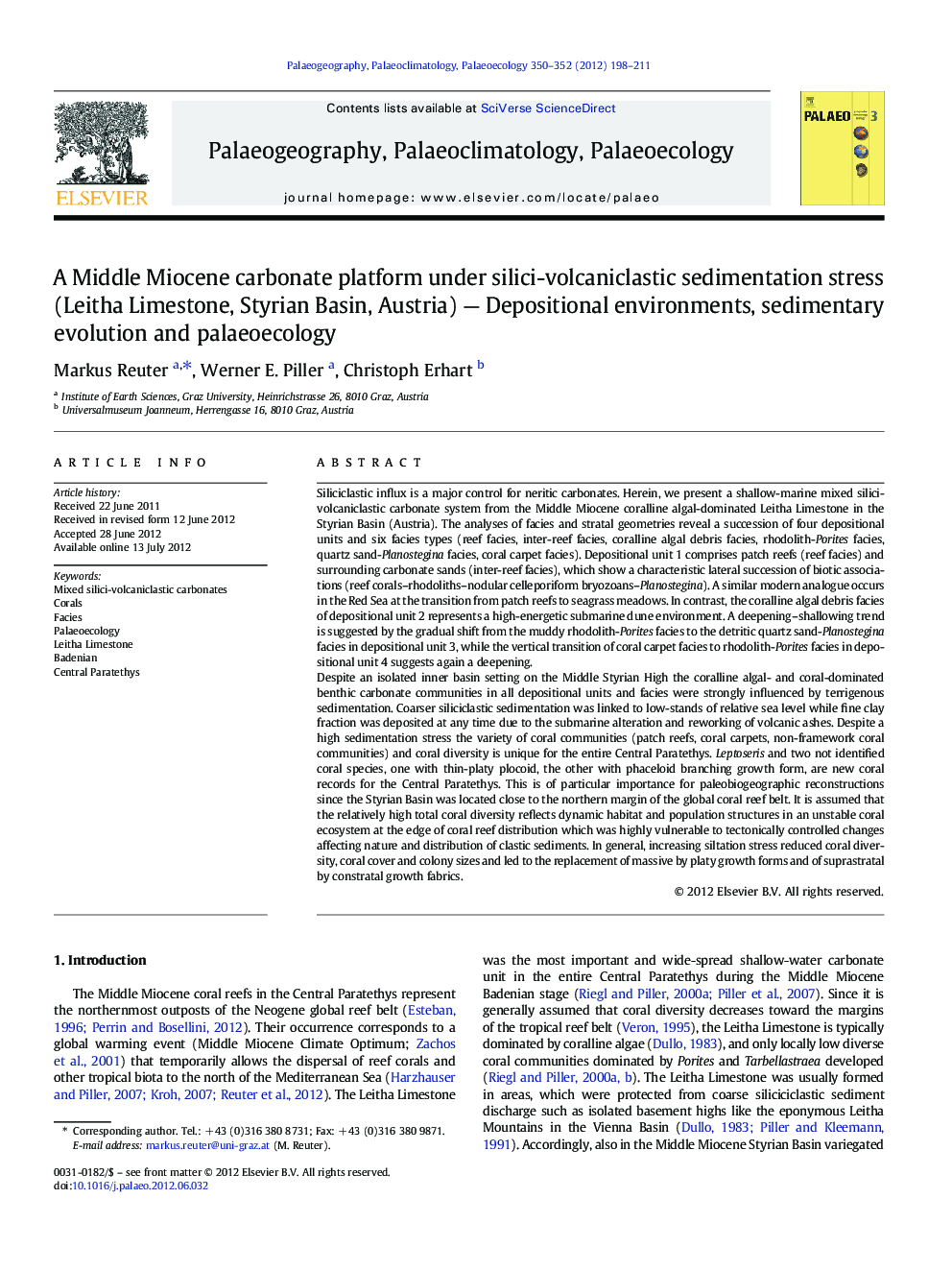| کد مقاله | کد نشریه | سال انتشار | مقاله انگلیسی | نسخه تمام متن |
|---|---|---|---|---|
| 4466830 | 1622225 | 2012 | 14 صفحه PDF | دانلود رایگان |

Siliciclastic influx is a major control for neritic carbonates. Herein, we present a shallow-marine mixed silici-volcaniclastic carbonate system from the Middle Miocene coralline algal-dominated Leitha Limestone in the Styrian Basin (Austria). The analyses of facies and stratal geometries reveal a succession of four depositional units and six facies types (reef facies, inter-reef facies, coralline algal debris facies, rhodolith-Porites facies, quartz sand-Planostegina facies, coral carpet facies). Depositional unit 1 comprises patch reefs (reef facies) and surrounding carbonate sands (inter-reef facies), which show a characteristic lateral succession of biotic associations (reef corals–rhodoliths–nodular celleporiform bryozoans–Planostegina). A similar modern analogue occurs in the Red Sea at the transition from patch reefs to seagrass meadows. In contrast, the coralline algal debris facies of depositional unit 2 represents a high-energetic submarine dune environment. A deepening–shallowing trend is suggested by the gradual shift from the muddy rhodolith-Porites facies to the detritic quartz sand-Planostegina facies in depositional unit 3, while the vertical transition of coral carpet facies to rhodolith-Porites facies in depositional unit 4 suggests again a deepening.Despite an isolated inner basin setting on the Middle Styrian High the coralline algal- and coral-dominated benthic carbonate communities in all depositional units and facies were strongly influenced by terrigenous sedimentation. Coarser siliciclastic sedimentation was linked to low-stands of relative sea level while fine clay fraction was deposited at any time due to the submarine alteration and reworking of volcanic ashes. Despite a high sedimentation stress the variety of coral communities (patch reefs, coral carpets, non-framework coral communities) and coral diversity is unique for the entire Central Paratethys. Leptoseris and two not identified coral species, one with thin-platy plocoid, the other with phaceloid branching growth form, are new coral records for the Central Paratethys. This is of particular importance for paleobiogeographic reconstructions since the Styrian Basin was located close to the northern margin of the global coral reef belt. It is assumed that the relatively high total coral diversity reflects dynamic habitat and population structures in an unstable coral ecosystem at the edge of coral reef distribution which was highly vulnerable to tectonically controlled changes affecting nature and distribution of clastic sediments. In general, increasing siltation stress reduced coral diversity, coral cover and colony sizes and led to the replacement of massive by platy growth forms and of suprastratal by constratal growth fabrics.
► Palaeoecology of a Miocene mixed silici-volcaniclastic carbonate system.
► Volcanic ashes as sediment source in isolated inner basin settings.
► Lateral and vertical ecological zonations of calcareous biota under siltation stress.
Journal: Palaeogeography, Palaeoclimatology, Palaeoecology - Volumes 350–352, 15 September 2012, Pages 198–211